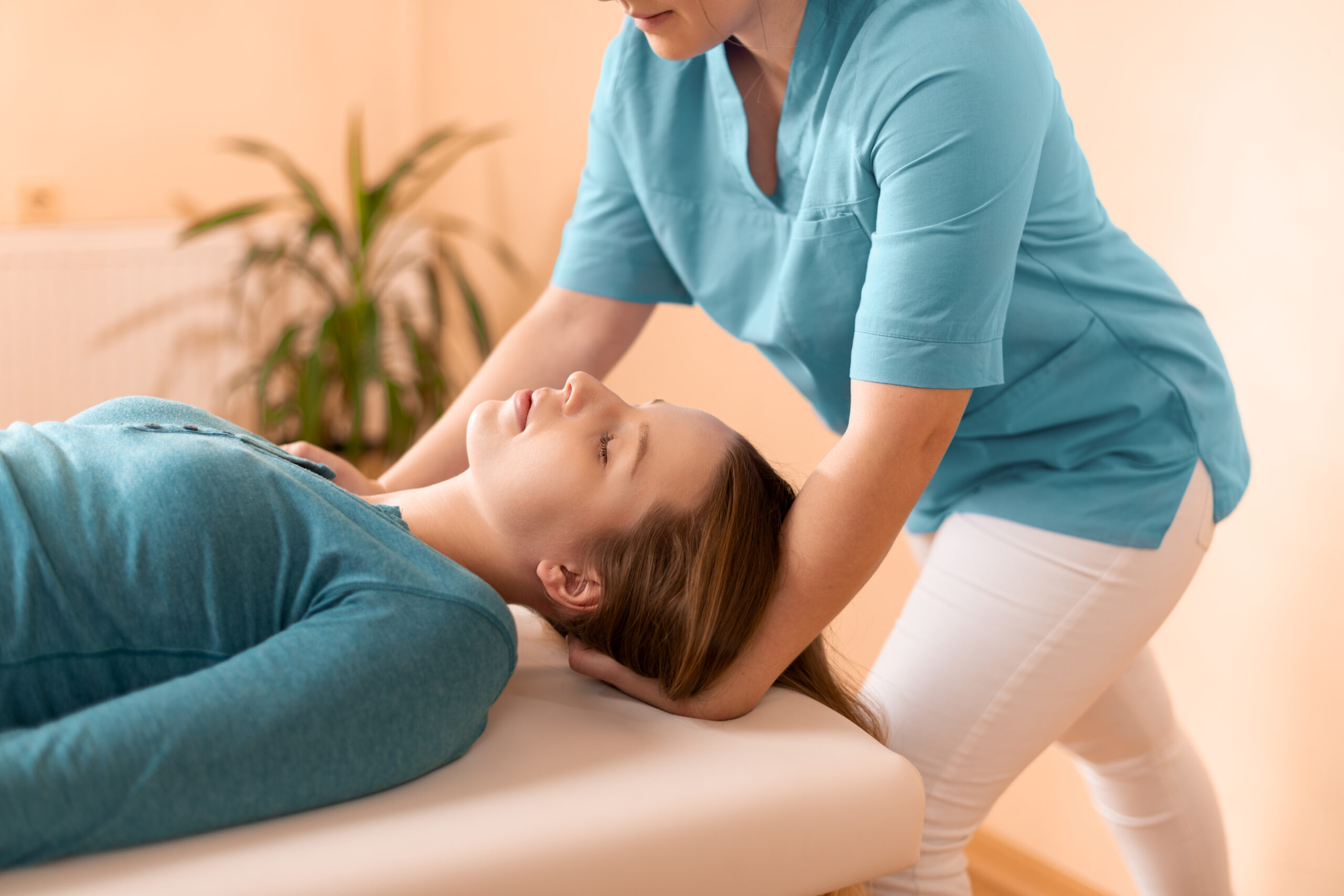Vestibular Rehabilitation and Concussions
Vestibular rehabilitation and concussions are often linked. This is one of the more effective methods for improving the function of the brain after a serious impact to it. Whether you are in a car accident or facing an injury from a sport, ensuring your brain, including the vestibular system, is working properly is essential. But what is this system, and how does this therapy work?
What is the Vestibular System?
The vestibular system is a tiny organ in the ear that sends signals to our brain involving our balance and orientation. It helps us understand where our head is positioned in relation to the horizon to help us maintain our posture as well as how we are moving. Specifically, this system helps your brain to understand motion and position, and orientation. It is how you know how far to reach to pick something up or how far to toss a ball.
This system is also known as the inner ear. There are two components to it. The semi-circular canals are one of these, and they work to detect the rotation of the head. That includes moments when you may be saying “yes” or “no” by nodding or shaking your head. The other component is the otolith organ. This component is a gravity-focused component. It detects linear acceleration of the head. That includes instances in which the head is moving, such as going up an escalator or moving in a car.
Within the brain are very specific visual-vestibular reflexes that help the brain to interpret how your head is moving in relation to the eyes and body. For example, when you turn your head side to side, these reflexes tell your eyes how they should move as well as how your head is moving in relation to your body.
What is Vestibular Dysfunction?
After a concussion, the brain may suffer damage to the area where the information from the vestibular system is interpreted. This often means that a person may feel dizzy or unsteady. Sometimes this can be a passing feeling that comes and goes without a lot of warning. Other times, it is constant. When that is the case, your concussion therapy should include some type of support for the vestibular system.
Vestibular dysfunction is the term used to describe a disturbance in the body’s balance system. It occurs when the inner ear or brain suffers an injury leading to the signals from the inner ear to become slowed, less frequent, or difficult to process.
The most common causes of vestibular dysfunction include:
- Viral inner ear infections
- Head injuries/Concussion
- Aging
- Genetic and environmental questions
What Impact Does a Concussion Have on Its Function?
A concussion occurs when there is an injury to the brain. When they happen, they can impact the various working components of the brain in numerous ways. This may include affecting memory, balance, speech, and reflexes. In a person who suffers damage to the area where the vestibular system is interpreted, a concussion could cause dizziness, trouble with balancing, and disorientation.
This occurs as damage to the neurons, or cells within the system, suffer damage caused by things like a hit to the head. Head trauma can damage the vestibular organs and impact the function of the brain as a result. Vestibular therapy may help to improve this.
Symptoms of Vestibular Dysfunction Following a Concussion
The symptoms of this type of injury are numerous but typically include:

- Nausea
- Dizziness
- Vertigo (it feels as though the room is spinning)
- Visual impairments
- Disequilibrium
- Sensitivity to motion
- Changes to balance
- Some people experience headaches which may be related to dizziness
- Motion sickness
- Nystagmus, a type of rapid, uncontrollable eye movement
Symptoms can range from mild to severe, depending on the severity of the concussion and where it is impacting your brain. If you notice any of these symptoms, especially if they linger for some time, it is best to seek out care from a physical therapist or another doctor right away.
Will Vestibular Therapy Help Me Return to Physical Activity and Sports?
Vestibular therapy after concussions is a valuable tool that may help you to get back to your daily activities sooner, including back to the sports you are playing. This treatment, called vestibular rehabilitation, works to improve the way the inner ear, brain, nerves, muscles, and eyes function. By retraining these components how to work properly, it is possible to see a marked improvement in the symptoms you feel.
First, an evaluation is completed to determine the current limitations, including those related to balance, eye movements, and positional changes. Then, a customized treatment plan is created to help improve the function of the brain. This is a type of physical therapy that can help a person over time to see a marked improvement.
What to Expect in Physical Therapy
Vestibular therapy is different for each person, but most of the time, this therapy takes 4 to 8 weeks to complete with routine physical therapy appointments. Frequency may vary dependent on symptoms, but typically starts at twice a week. During the experience, you will engage in a variety of exercises that are designed to address the symptoms you are having. This may include exercises to decrease tightness in muscles or improve communication between the eyes and the brain.
If you engage in specific sports activities and you are struggling with symptoms like these after a concussion, your physical therapist and treatment team can work together to create a treatment plan to address the specific areas of concern you are having.
Let Our Team Help You
Rock Valley Physical Therapy can help you to manage your symptoms after a concussion. We offer vestibular therapy for concussions and will work with you to get you back to your life and activities in no time. Contact us now for an appointment.
